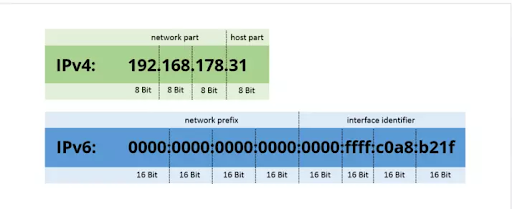-
1. Introduction to operating systems
While web developers primarily focus on coding web applications and front-end development, having a good grasp of operating systems is essential for ensuring the compatibility, security, performance, and reliability of their applications, as well as for troubleshooting and optimizing various aspects of web development.
-
2. Introduction to data networks
Networking is an integral part of web development because web applications rely on network communication to function. A solid understanding of networking concepts and practices is essential for building secure, performant, and reliable web applications.
-
3. The shell. Linux commands
Knowing Linux commands for a system administrator or even a software developer is of utmost importance because most servers run on a Linux or Unix operating system.
- 3.1 ls : showing files
- 3.2 file permissions
- 3.3 mkdir. Creating directories
- 3.4 rmdir. Deleting directories
- 3.5 Moving/renaming files and directories
- 3.6 Other commands
- 3.7 Mounting units
- 3.8 Daemons
- 3.9 What processes are running?
- 3.10 Who am I and where am I?
- 3.11 Files has its owner
- 3.12 Other commands
- 3.13 Users
- 3.14 The /etc/passwd file
- 3.15 The /etc/group file
- 3.16 Links
-
4. Shell script
In this chapter I want you to learn shell script but based on examples. Once you see the example I will propose another very similar one. If you do it and it works great, that means that not only do you understand the exercise but you are able to perform similar exercises. Keep in mind that with shell scripts you have to be patient. Misplaced whitespace can even cause a script to not work. If that happens, take a deep breath, be patient and persist, you will surely find the solution to the problem.
- 4.1. Your first shell script
- 4.2. Adding comments to your shell script
- 4.3. Variables in bash
- 4.4. Functions in bash
- 4.5 Conditional sentences
- 4.6. Repetitive sentences. Loops
- 4.7. Returning to functions
- 4.8. Arguments passed to a shell script.
- 4.9. Interaction with the user.
- 4.10. Using bash as a calculator
- 4.11. The expr command
- 4.12. What is the exit command and exit status?
- 4.13. File comparisons.
- 4.14. Comparisons of integers.
- 4.15. The shift command.
- 4.16. The let command and the arithmetic operators.
- 4.17. Logical operators.
- 4.18. The generation of random numbers.
- 4.20. C-style variables.
- 4.21. Menus in shell scripts.
- 4.22. Length of a string.
- 4.23. Finding out the numerical position of a substring in a string.
- 4.24. Extraction of a substring.
- 4.25. Deleting a substring.
- 4.26. Replacing a substring.
-
5. NETWORKING
2.4 What is an IP address
An IP address is based on the Internet protocol, which is also the basis for how the Internet works. It is the unique address of a device (for example, a computer, a web server, or a printer) on an internal or external network. An IP address can also refer to a set of devices, as in the case of broadcasting or multicasting. Likewise, a single computer can be assigned multiple IP addresses. What is certain is that each IP address on a network can only be assigned once at any given time.
2.4.1 What is an IP address made up of?
There are two types of IP addresses (IPv4 and IPv6) with very different aspects.
Both are made up of a network identifier (to find the path in IP routing) and a device identifier (to reach a specific device).

IPv4:
- * They are made up of 32 bits.
- * A total of about 43 billion different addresses can be represented.
- * They are never needed all at once.
- * Some are only used on private networks.
IPv6:
- * Designed for the internet of things.
- * About 340 sextillion (a figure of 37 zeros) addresses can be generated.
- * They are made up of 128 bits.
Explain to your partner what is de difference in between an IPv4 and IPv6 address.
2.4.2 Who assigns IP addresses?
The supreme authority in assigning IP addresses is the Internet Authority for Assigned Numbers (IANA), which is a department of the Internet Corporation for Assigned Names and Numbers (ICANN).
2.4.3 What types of IP addresses are there?
Mainly a distinction is made between dynamic and static IP addresses. In addition, there are also “special use” IP addresses, of which the majority are reserved for private networks.
Dynamic IP’s addresses to browse the internet
Static IP’s addresses for websites and businesses
2.4.4 Can you hide an IP address?
IP addresses can never be completely hidden, but they can be hidden using different methods. The basic principle is always the same: first, data packets are diverted to a server that uses its own IP address, and from there they are sent to the recipient. There are several tools for this:
- * The Tor Browser Mozilla Firefox package allows users to browse the Internet anonymously. However, since all data packets must first pass through a separate network, sometimes high bandwidths cannot be achieved.
- * Virtual private networks (VPN) are virtual communication networks that allow encrypted data to be transmitted. If browsing through a VPN, the requested web server only sees the IP address used by the VPN, not the user’s.
- * A proxy server can also receive data packets and transmit them using its own IP address.
2.4.5 How can you see what your IP is?
To configure an email or cloud client, you sometimes have to enter your own IP address manually. How is it found out?
- * Windows: ipconfig
- * Linux: ifconfig
- * Mac: Network preferences
Explain to your partner how can you hide an IP address.
